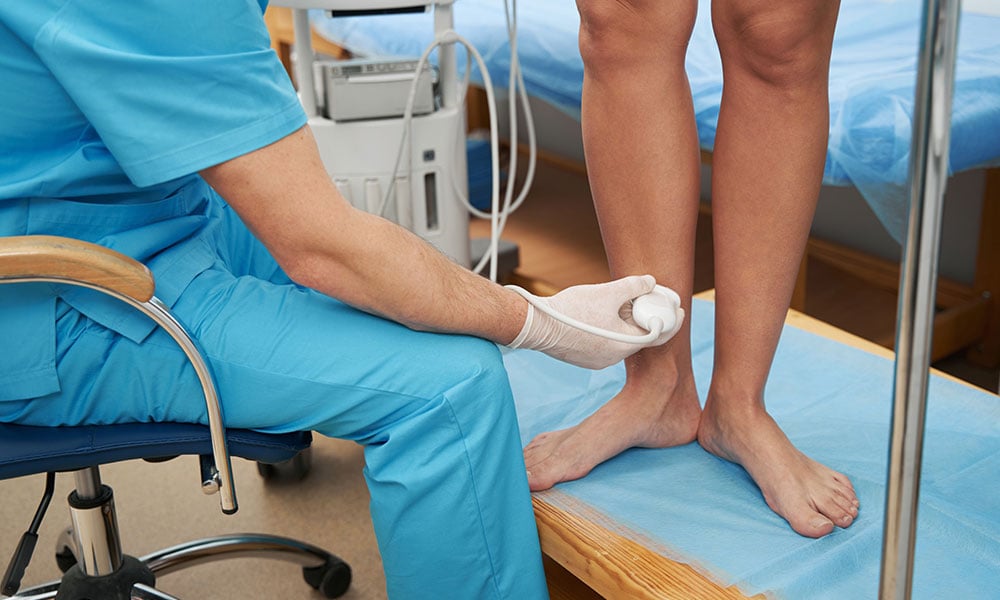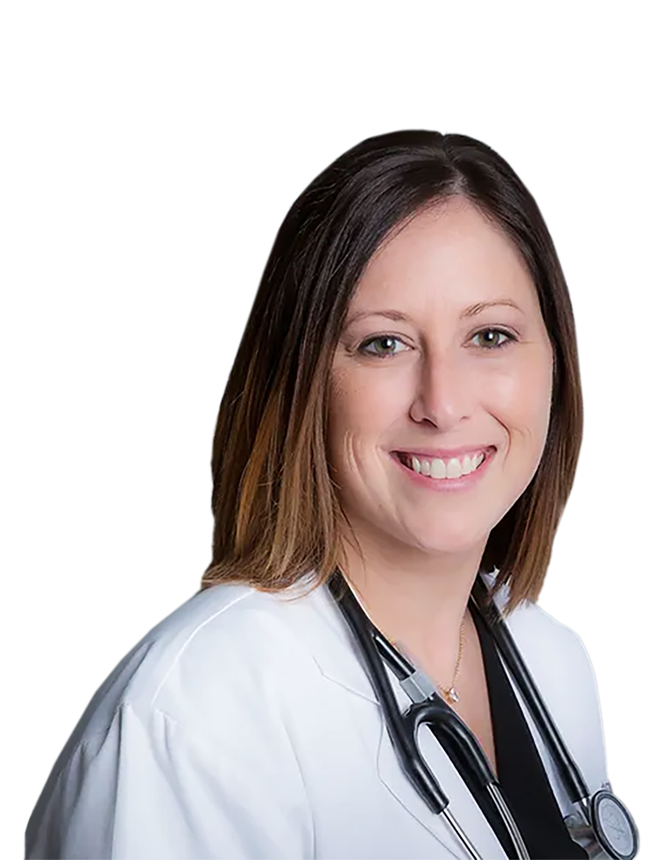Vein &
Vascular Care
Having vein and vascular issues can cause you great discomfort. Finding vein and vascular care can provide significant relief from symptoms. Cardiovascular Medicine is proud to offer a state-of-the-art vein treatment center to treat all types of venous diseases, including varicose veins.
When to See a Vein Specialist
Venous disorders can cause damage to your veins, so it’s important to seek treatment if you’re experiencing symptoms. Our vein specialists can help you understand what is causing you discomfort with thorough diagnostic testing. We are able to provide relief for those with various venous conditions, including:

Diagnostic Testing
Diagnosing venous disorders can involve many different techniques. Conditions such as varicose veins are often visible, so we begin by conducting a physical examination. Understanding the cause and extent of venous disease sometimes requires seeing how well your blood is flowing—tests such as venous Doppler ultrasound can help us get an accurate diagnosis.
Vein & Vascular Treatments
We have two main goals when treating your venous condition: alleviating your discomfort and improving blood flow. If your vein and vascular issues become severe, we are able to help. Our minimally-invasive treatment options will help you feel better and get back to your normal life within a few days. They include:
Non-Thermal Sclerosant Vein
What is a Non-Thermal Sclerosant Vein Closure?
Our vascular system is a complex network of veins and arteries that branch out like tree roots to carry blood between the body’s extremities and the heart. Particularly in the legs, blood has to flow against gravity to return to the heart, where it can be oxygenated and recirculated throughout the body. To keep blood flowing in one direction, veins have tiny valves that open and close to prevent blood from back flowing. Venous insufficiency, or vein disease, can develop when these valves become weakened or damaged, causing blood to flow backward toward the feet. This backward flow of blood can lead to a condition known as varicose veins.
Non-thermal sclerosant vein closure is considered one of the least invasive forms of varicose vein treatment and tends to be the chosen method of treatment when larger veins are involved. A vein specialist injects a foam solution into part of the diseased vein, causing it to collapse in on itself with no serious side effects. Because non-thermal sclerosant vein closures use a chemical rather than heat to seal the affected vein, the procedure involves fewer injections along the length of the treated vein. As such, patients usually experience fewer side effects, reduce the risk of damage to surrounding nerves or structures, and recover faster than other forms of treatment.
What to Expect
Before a non-thermal sclerosant vein closure procedure, a member of our staff will escort you to an exam room, explain the procedure and possible risks, and answer any questions you have before asking you to sign a consent form. At this time, they will also answer any questions you may have about the procedure and recovery.
Your doctor will start by examining your legs to identify the veins that will require treatment. During the procedure, they will numb the surface of the skin and use ultrasound-guided technology to guide a tiny catheter into the affected vein. You may feel a pinch or stinging sensation, but pain is generally minimal. Using a syringe, your vein specialist will inject a safe and effective foam agent into the affected vein. The agent irritates the lining of the vein, causing it to swell shut. Blood naturally reroutes to healthier veins, and eventually, the affected vein is absorbed into surrounding tissue.
The procedure usually takes less than one hour to complete. The number of injections will depend on the severity of the condition. Following the procedure, your vein specialist may apply compression to your legs to prevent the treated vein from refilling with blood.
Recovery
Most patients can resume normal activities (within reason) on the same day. Your doctor will encourage you to get up and walk around to prevent the formation of blood clots. You’ll be asked to avoid strenuous exertion for about a week after the procedure; however, low-impact exercises like walking and biking are encouraged. Your doctor may also suggest avoiding prolonged periods of inactivity.
Results vary, but patients typically notice an improvement in symptoms within a few months. Many patients discover that non-thermal sclerosant vein closure produces comparable aesthetic outcomes with less discomfort and a quicker return to regular activities than other treatment options. Complete results may take up to 12 months, depending on the condition of the veins treated.
Risks & Side Effects
As with any medical procedure, there may be some risks and side effects associated with non-thermal sclerosant vein closure. Generally, side effects are mild, such as leg soreness or stiffness, or bruising or itching at the injection site, and typically resolve after about a week.
Other side effects can include:
- Mild numbness or tingling
- Mild headache
- Dizziness
- Mild pain or warmth
Am I a Candidate?
Non-thermal sclerosant vein closure will not prevent the development of new varicose veins, but it will effectively treat current insufficiencies. If you are between the ages of 30 and 60 and suffer from the uncomfortable side effects associated with varicose veins, you may be a good candidate for non-thermal sclerosant vein closure.
This treatment may not be suitable for everyone. If you are allergic to polidocanol or have been diagnosed with arterial disease, you may not be a good candidate for non-thermal sclerosant vein closure. Other disqualifying factors include:
- Mobility issues
- A history of blood clots in your veins or lungs
- Major surgery within the last three months
- A recent extended hospital stay
- Pregnancy
More on Non-Thermal Sclerosant Veins
Cause and Symptoms of Varicose Veins
Varicose veins occur when a build-up of blood in affected veins creates pressure, causing them to bulge out from under the skin. These bulging veins can be visible and may feel like heaviness in the legs. Men and women over the age of 40 are at an increased risk of developing varicose veins. Obesity and a sedentary lifestyle can also increase your risk of developing varicose veins. Other symptoms include:
- Leg cramps
- Burning sensations
- Swelling
- Constant itching
- Numbness
- Aching
- Fatigue
How to Prepare for The Procedure
Before the procedure, your vein specialist may ask you to:
- Refrain from using any lotions or products on your legs.
- Bring a pair of loose, machine-washable shorts for the procedure.
- Avoid wearing compression stockings 24 hours prior to the procedure.
Rare But Serious Side Effects
Serious side effects are rare but may include:
- Allergic reaction
- Blood clots
If you experience severe pain, burning, irritation in one or both legs, sudden severe headache, or confusion, seek emergency care.
If you experience mild symptoms such as hives, swelling of your face, lips, tongue, or throat, or difficulty breathing, contact your provider immediately.
Meet Your Illinois and Iowa
Cardiovascular Physicians
CVM Locations
Insurance Providers We Accept
In Search of Care? Request a Consultation Today



